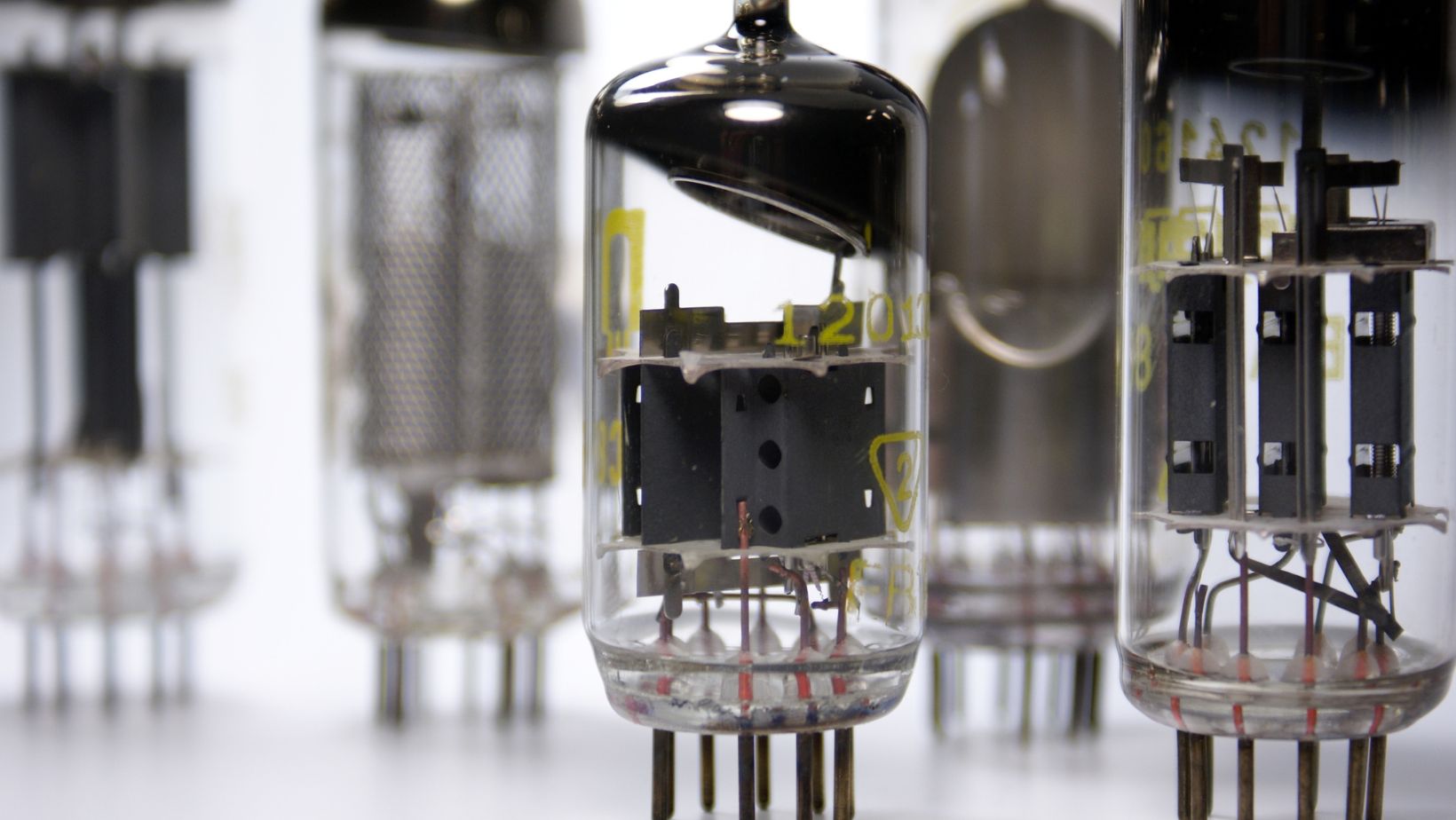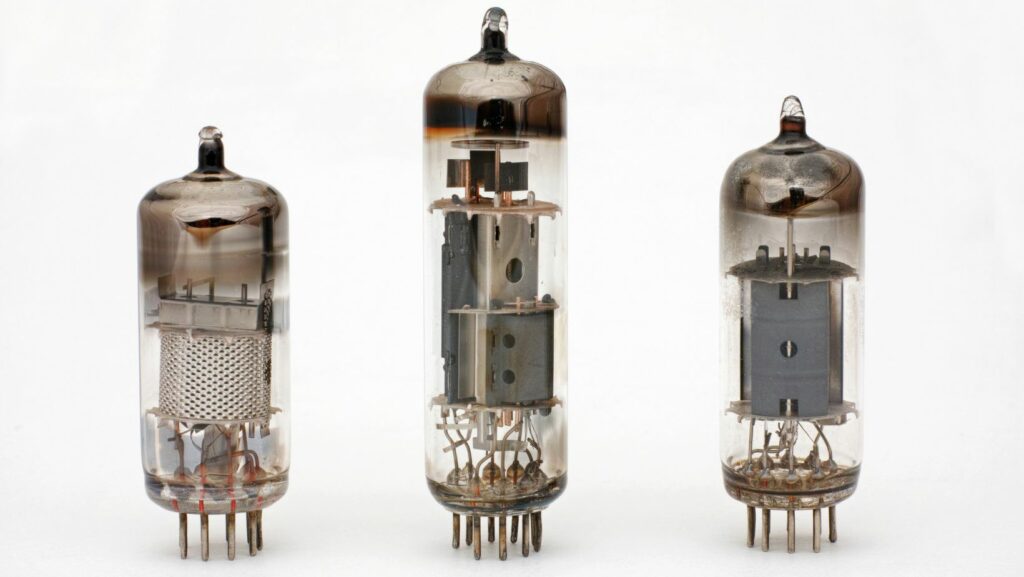Contents
Table of Contents
ToggleWhat Are Vacuum Tubes
Vacuum tubes, also known as thermionic valves, are electronic devices that were widely used in early electronic systems. They played a crucial role in the development of technology and were the predecessors to modern transistors.
A vacuum tube consists of a sealed glass envelope containing electrodes and a vacuum. The main components inside the tube include a cathode (which emits electrons), an anode (which attracts and collects electrons), and control elements such as grids or plates. When electrical current is applied, the cathode heats up, releasing electrons into the vacuum space. These electrons then flow towards the positively charged anode, creating a controlled flow of electric current.
Vacuum tubes were once fundamental building blocks in various applications like radios, televisions, amplifiers, and early computers. They allowed for signal amplification, rectification, oscillation, and switching functions. However, with advancements in technology, vacuum tubes have been largely replaced by smaller and more efficient solid-state devices like transistors.
Despite their declining usage today, vacuum tubes continue to hold significance among audio enthusiasts who appreciate their unique sound characteristics in guitar amplifiers and high-end audio equipment. Understanding the fundamentals of how these fascinating devices work can provide valuable insights into the evolution of electronics over time.
In conclusion, vacuum tubes were groundbreaking inventions that paved the way for modern electronics. Their ability to control electron flow within a vacuum made them indispensable components in early electronic systems. Although they have been largely replaced by solid-state devices today, their impact on technological advancements cannot be understated.

How Vacuum Tubes Work
Vacuum tubes, also known as electron tubes or thermionic valves, are electronic components that played a significant role in the development of early electronics. In this section, I’ll explain how vacuum tubes work and their basic principles of operation.
The Structure of a Vacuum Tube
A vacuum tube consists of several key elements: a cathode, an anode (or plate), and control grids. These components are enclosed within a glass or metal envelope from which air has been removed to create a vacuum. The absence of air prevents the interference caused by unwanted particles during electron flow.
Electron Emission
The process begins with the heating of the cathode element using either direct current (DC) or alternating current (AC). This heat energizes the cathode, causing it to release electrons through a phenomenon called thermionic emission. The emitted electrons form a cloud around the cathode surface.
Control Grids and Electron Flow
The emitted electrons are attracted towards the positively charged anode (plate). However, their path is controlled by one or more control grids placed between the cathode and anode. By applying appropriate voltages to these grids, we can regulate or modulate the flow of electrons.
Amplification and Signal Processing
One important application of vacuum tubes is amplification. When a small signal is applied to one grid, it controls the larger flow of electrons passing through another grid. This amplifies the original signal while maintaining its waveform integrity.
Advantages and Limitations
Vacuum tubes were widely used before transistors became popular because they offered certain advantages such as high power handling capabilities and excellent audio quality for music reproduction. However, there were limitations too – vacuum tubes required higher operating voltages, consumed more power, generated significant heat, and were physically larger compared to modern solid-state devices.
In conclusion,
vacuum tubes operate by heating a cathode to release electrons through thermionic emission. These electrons are controlled by grids and directed towards the anode, allowing for amplification and signal processing. While vacuum tubes had their advantages, they were eventually replaced by more efficient solid-state devices.
That’s it for this section on how vacuum tubes work. In the next section, we’ll explore the historical significance of these electronic components. Got it! Thanks for the clarification. Now let’s dive into the fascinating world of vacuum tubes and explore their applications.

